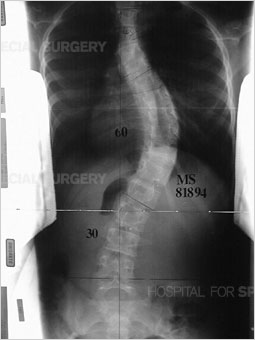After talking to Doctor Shindell yesterday, and knowing that he has said, not only to me, but to all his patients that scoliosis is a genetic issue, I now know that the main question is: how? There is no certain answer as to what gene directly causes scoliosis, although plenty of research has been done on the subject.
When parents or grandparents have a known history of scoliosis, it's common for them to watch out for their children to see if/when the scoliosis takes an obvious form.
According to this website (The National Library of Medicine) there are different genetic and environmental factors that contribute to a child having scoliosis, however, when a "close relative" has idiopathic scoliosis, it increases a child's risk at having the disorder as well.
Although I didn't have access to the full text, in an abstract for an article called "Genetics of Scoliosis" by Robert F Henry ,M.D., and Karthik Madhavan, M.D., it is proposed that the gene for scoliosis is either autosomal dominant, X-linked, multigene, or multifactoral. None of these have actually been proven true and are still just theories.
Although knowing the gene isn't a pressing issue that needs to be figured out, it is still largely important as some theorize that the genetics of the disorder can also call for how severe the curve is and can be the difference between 20 degrees (top) and 60 degrees (bottom) which is also the difference between bracing and operation.
Of course, if (hypothetically) science gets to the point where doctors can calculate the projected amount of curvature, the doctor would and should still brace as the "projected amount" could be avoidable.
However this begs the question, is putting money into this research really a large need? But that's another issue on its own.


No comments:
Post a Comment